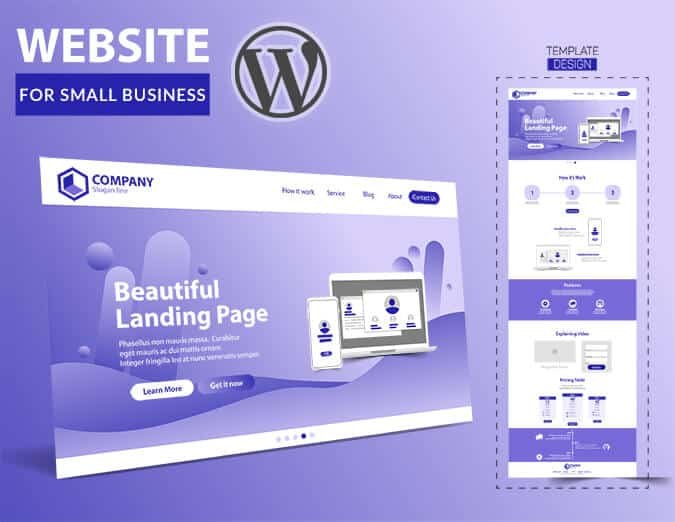Redesigning Website? Here’s What You Should Consider
If you are working on redesigning a website, you’ll most definitely need to contemplate how to maintain SEO rankings and understand the domain authority before, after and during the designing. When planning a new website design, the aesthetics of the site shouldn’t be the only thing you need to bother. During this process, you also need to take time to not only maintain your SEO but look for techniques to improve it. Many companies often make the fatal mistake of assuming a website redesign won’t impact SEO, but it does and does it importantly.

If not done accurately, you could rub off all your previous SEO efforts. There are both technical and non-technical domains to consider while developing any web design and development activities.
Are you planning to get a snazzy new website? Is it all set to launch? However, before you hit publish, did you take enough time to make sure the redesign doesn’t tank your search engine optimization (SEO) efforts? These guidelines should help minimize the influence of your website redesign and get you back on top in no time!
- Content & Information Architecture – Two pillar concerns for SEO success is the context of the website overall subject matter and sub-topic themes. They are built through the particular content on the site and is dependent on how the content is organized.Changes to the sitemap, information architecture, and the overall content plan while redesigning is the key, and it is must to involve SEO and help in maintaining the drive. You want to make sure that relevant pages should not be omitted from the site going forward; more so if they carry the SEO value. It is important to keep in mind that the original message and the theme of sections of the site must not get diluted by the redesign. To start with, work with your team on the requirements of the current sitemap and understand the need for the new sitemap as this will be your guide for the remainder of the levels in the redesign process for SEO. Developers and designers can implement the crawling tools (e.g., Screaming Frog or DeepCrawl) to find all pages of your website.
- Importance of Historic Web Crawls – If you are planning to save crawl data from the old site, it is always a good idea. Using tools like Screaming Frog to load the old site crawl and analyzing it can yield proper results. If something disappears, web.archive.org is commonly used to show the old structure and content.
- On-page Optimizations – If you use the crawlers for your old site, you can export all the key on-page elements, which will include all meta titles, alt tags, meta descriptions, and headers. However, keep in mind, if it’s performing admirably, try not to change it too much unless there have been significant changes in the main idea or the content, that is in the products and services. As a designer, you should be careful about the pages and specific on-page optimization that go from dev to the live site. It is especially helpful if your website has much dynamic content.
- Setting up 301 and 302 Redirects – First and foremost, you must redirect the old URLs to new ones. If you are making any significant changes to the permalink structure, then you should have a spreadsheet of all the required redirects. Once you have developed the new site and it is ready to go live, crawl the old list of URLs to assure that everything redirects as it as in the earlier setup.
- Using the 301 Redirects – A 301 redirect is defined as the permanent redirect from one URL to another. This redirection happens for both search engines and website visitors. A 301 redirect can be fitting for SEO compared to a temporary one in many cases because it assigns the inbound links as well (around 90 to 99% of link equity). In most cases, this is the favoured method for achieving redirects on your new site.
- Setting up 302 Redirects – A 302 redirect is temporary that redirects users and search engines to the coveted page for a short amount of time until it is finally removed. Because it’s temporary, you should use it during the update of a web page so that the website visitors can have a seamless experience. A lot of 302 redirects are seen to damage the SEO, so be careful when using them.
- Run an SEO Audit – Before you commence your redesign, it’s crucial to understand the best practices that will enable you to preserve your SEO rankings.
It would be best if you started by performing an SEO audit of your site. This would include understanding all the keywords you are trying to rank for and what pages should be connected. The most common challenges with SEO while redesigning a website include the following:- The removed content
- Change or edit in the existing content
- Content may move depending on the new site’s navigation or site map
- Change in the URLs
- Changes in the page-level optimization
- Adding or altering new content, new technology, new sections, and new features
- Further technical issues
- Edits required in the internal link structure
- Changes in the domain or subdomain
- Protocol deviations
- Use Google Search Console to Check Your Website – You can find the diagnostic information directly from Google and can also track 301s and 404s to assure you’ve done everything accurately. Find out from the Search Traffic > Search Analytics tab, which has much comprehensive information about impressions, clicks, click-through rate, and average position.
- Monitor Your Rankings and Organic Traffic – Some variation should be expected with a website redesign. You should build a master keyword spreadsheet, which will include where you rank each month for each keyword. Let this page also have the ranks of the keyword maps. It’s unmanageable to track every keyword for your site, so you should have a proper approach to keep in mind the pages that have high organic traffic referrals.
Bottom Line
Here are some pro-tips to remember and help you avoid the fatal mistakes that can cost you the SEO ranks.
- Don’t begin from scratch on creating the new content: If you have content that’s ranking, don’t ditch it. Not moving the valued content to the new site might affect your rankings.
- Don’t ignore redirects: when visitors receive “page not found” errors, this means the web pages have dropped off from Google’s index.
- Don’t overlook internal linking; not pushing this to the new site is a fatal mistake and you should avoid it by every chance.
- Don’t forget to renew outbound links as required.
- Don’t overlook pages which have given high rankings and many backlinks. You can use Ahrefs to find these backlinks and store or transfer them
Redesigning a website is a move that is done by many companies as they plan to evolve. You should follow these best practices to maintain SEO rankings while getting a highly aesthetic web redesign from the team of Anblik Web Development Company. Feel free to contact us in case you have any queries about maintaining your hard-earned SEO after a website redesign.










